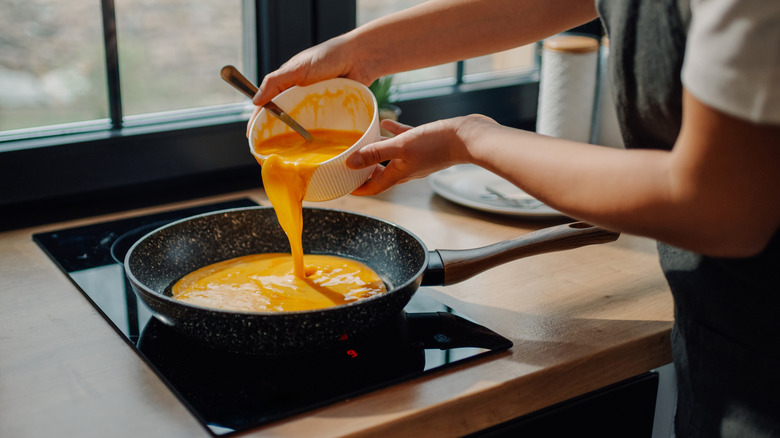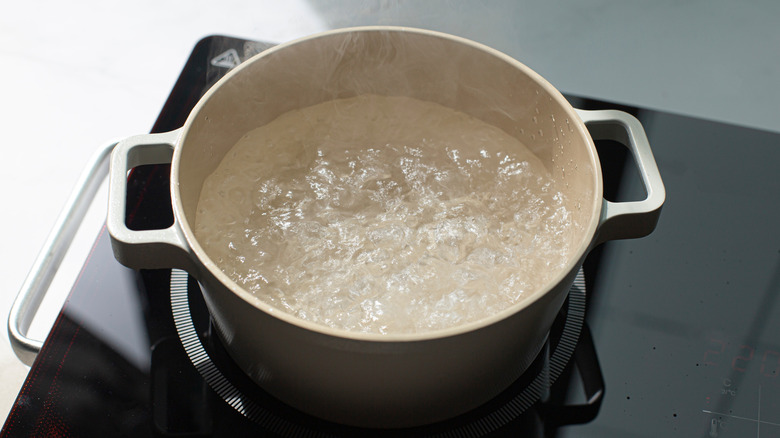The Underutilized Feature Of Induction Stoves That You Won't See With Electric Or Gas Models
Induction stoves do everything a standard gas or electric stove does but quicker, more precisely, and more efficiently. An electromagnetic field transfers heat directly to cookware, bypassing the need for an electric coil or an open flame. They look and clean like a glass cooktop, but the surface of the stove doesn't get hot. It may feel a little warm from the radiated heat of the cookware, but never hot enough to burn your hand. And, since they don't work if there isn't a pan on the burner, you (or your child) can't accidentally turn the stove on. There's an underutilized feature you may not be aware of if, like a lot of people, you didn't read the manual. Most induction stoves have a boost feature that gives one burner an extra burst of power.
Because induction stoves typically heat quicker than traditional stoves, 6 quarts of water can come to a boil two to four minutes faster than on a gas or electric burner. Use the boost function to increase the power output and the water will boil even more quickly, ensuring you get that hot cup of tea pronto or the right sear on your steak. But, even though most induction cooktops will automatically turn off the boost function, it's best not to walk away from the stove. That pot of water you've left on the burner could boil dry in minutes.
What does the boost function do?
When you're weighing the pros and cons of various stove types, check to see if the induction unit uses power share, power flex, or power boost. Stoves with power share or power flex redirect some of the power from burners in the same cooking zone to another burner. Those burners will have lower power output until the share is deactivated. But when you use power boost, all of the stove's power in the same zone is sometimes directed to the boosted burner, depending on the stove's model. Which choice is best for you depends on how you cook. If you normally use multiple burners at the same time, power share is best, but if you usually only use one burner at a time, boost is best. Different stove models handle power boost in different ways, so let your cooking style be your guide.
Because they use electromagnetic fields rather than direct heat to cook, induction stoves won't work with every pot or pan. You can buy sets of cookware to use with your stove, but you probably have some pots and pans that will work. Cast iron, carbon steel, and stainless steel contain ferrous metal, a must for induction cooking. Repurpose your aluminum pots and pans for other household and garden uses. There is one exception to this rule. You'll need special equipment if you can food with either a water bath or pressure canner. Note that there are traditional ranges with what their manufacturers call power boost, but they simply turn up the heat on one burner. Pots and pans will still need to heat up, but with an induction stove, the energy transfer from the electromagnetic field to the contents of the pan is immediate.

